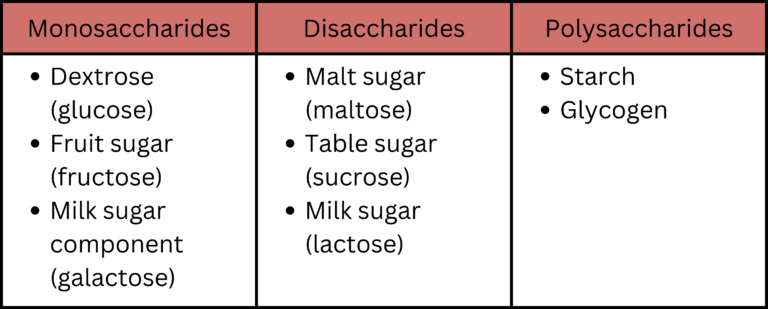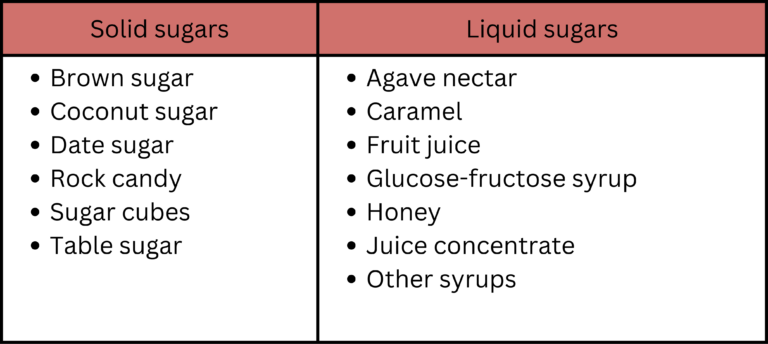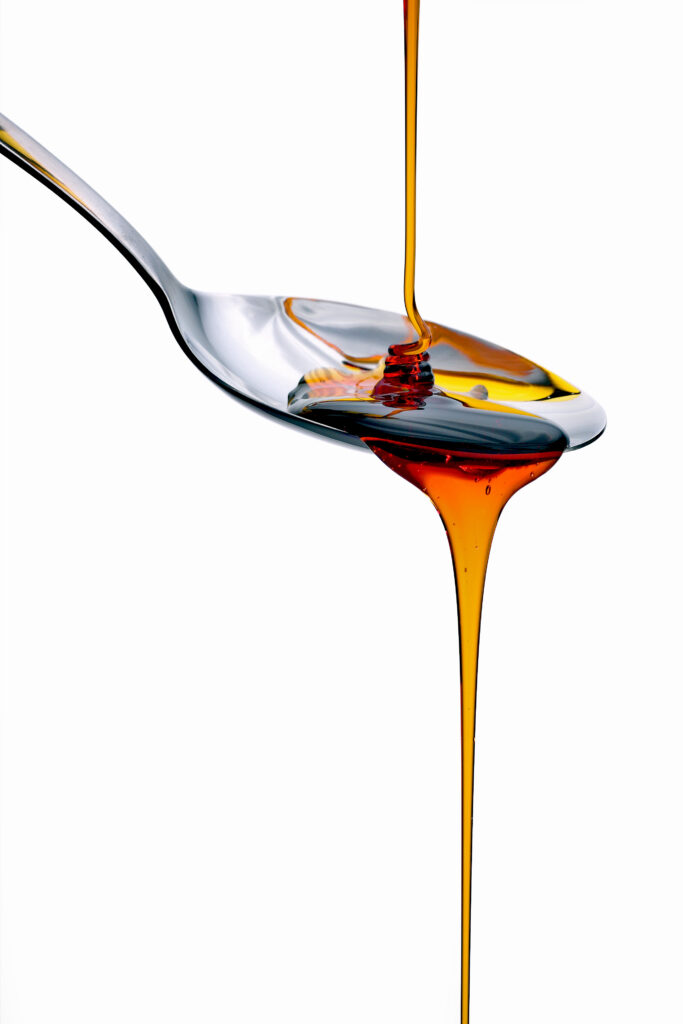
Major points:
- Sugars can be categorized by their chemical structure (mono-, di-, polysaccharides), physical form (solid, liquid), or natural occurrence (free, intrinsic sugars).
- Free sugars are particularly important. These include all sugars added to foods, as well as those naturally present in honey, syrups, fruit juice, and fruit juice concentrates.
- Neatic limits only free sugars, as they contribute to obesity and its related diseases.
What is sugar?
Sugar comes in many forms and colors, the various classifications can be quite confusing. This article aims to clarify them.
Classification of sugar...
… by chemical structure
All sugars are carbohydrates. Their classification based on chemical structure is summarized in the article on carbohydrates. The table below provides an overview.

… by physical form
Sugars can also be classified by their physical form, distinguishing between solid and liquid sugars. Some sugars, like brown sugar, sugar cubes or date sugar can be purchased in supermarkets, while others, such as glucose-fructose syrup, are primarily used in the food industry for manufacturing sweets.

Side note: What are fruit syrups?
More and more products are using fruit syrups instead of regular sugar. The reason? It sounds much healthier to consumers when a fruit-based ingredient appears on the label instead of plain sugar.
Fruit syrups can be made from various fruits, including apples, pears, and grapes. To produce one liter of syrup, 7 to 10 liters of fruit juice are heated and concentrated into a thick, sweet liquid. This syrup can contain up to 90% sugar.
Consumers may be misled by the appealing name, unaware that fruit syrups are essentially concentrated sugar.

… by natural occurrence
It is important to distinguish between free sugars and intrinsic sugars:
- Free sugars, as defined by the World Health Organization (WHO), include all sugars that manufacturers or consumers add to foods, as well as sugars naturally present in honey, syrups, fruit juices, and fruit juice concentrates.
- Intrinsic sugars are those naturally found in whole fruits and vegetables, as well as lactose in milk and dairy products.
Why is this distinction important?
Scientific studies show that only free sugars are linked to obesity and its related diseases. Intrinsic sugars, on the other hand, do not have the same harmful effects.
Consuming free sugars is considered a potential risk factor for various health problems, including obesity and cardiovascular disease.
Studies conducted by the Neatic team have also found that high free sugar intake is associated with an increased risk of early mortality, cardiovascular diseases, depression, and dementia. The impact was especially concerning when free sugars were consumed in the form of beverages.
The WHO recommends limiting free sugars intake to a maximum of 10% of total daily energy intake.
For a daily energy intake of 2,000 kcal, this equates to a maximum of 50 g of free sugars per day – roughly the amount found in 500 ml of a soft drink.
What does Neatic recommend concerning different types of sugar?
Neatic focuses exclusively on free sugars, as they contribute to obesity and its associated diseases. When Neatic refers to “sugar,” it always means free sugars.
Free sugars are limited to 40 g per day or 280 g per week (Principle 3), regardless of their source.
- The consumption of naturally occurring sugars in whole fruits and dried fruits is unrestricted, as long as they are eaten in their “edible entirety”. For example, Neatic recommends eating an apple with its skin (excluding the core) or consuming an entire orange instead of just its juice.
- Dairy products are not restricted in Neatic, as long as they do not contain added sugars or added flavors and sweeteners.
By distinguishing between free and intrinsic sugars, Neatic helps consumers make informed choices that align with long-term health benefits.
What does it actually mean when a product is low in sugar? You can find out how much sugar a product may contain and what other terms are used here.
Bibliography
Federal Office for Agriculture and Food (BLE) (2021): Enjoy sugar consciously. Available online at https://www.ble-medienservice.de/0195/zucker-bewusst-geniessen-modul-fuer-die-ernaehrungsberatung, checked on 1/22/2024.
Kaiser, Anna; Schaefer, Sylva M.; Behrendt, Inken; Eichner, Gerrit; Fasshauer, Mathias (2022): Association of all-cause mortality with sugar intake from different sources in the prospective cohort of UK Biobank participants. Br J Nutr, pp.1-25. DOI: 10.1017/S0007114522003233.
Schaefer, Sylva M., Kaiser, Anna, Eichner, Gerrit; Fasshauer, Mathias (2024). Association of sugar intake from different sources with cardiovascular disease incidence in the prospective cohort of UK Biobank participants. Nutrition Journal, 23(1), 22. DOI: 10.1186/s12937-024-00926-4.
Kaiser, Anna; Schaefer, Sylva M.; Behrendt, Inken; Eichner, Gerrit; Fasshauer, Mathias (2022): Association of sugar intake from different sources with incident depression in the prospective cohort of UK Biobank participants. Eur J Nutr. DOI: 10.1007/s00394-022-03022-7.
Schaefer, Sylva M., Kaiser, Anna, Eichner, Gerrit; Fasshauer, Mathias (2023). Association of sugar intake from different sources with incident dementia in the prospective cohort of UK Biobank participants. Nutrition Journal, 22(1), 42. DOI: 10.1186/s12937-023-00871-8.
Tummel, Birgitta (2014): Sugar, syrups, honey, sugar substitutes and sweeteners. 12th ed. Bonn: Aid.
World Health Organization: Guideline: sugars intake for adults and children. Available online at https://www.who.int/publications/i/item/9789241549028, checked on 1/22/2024.
